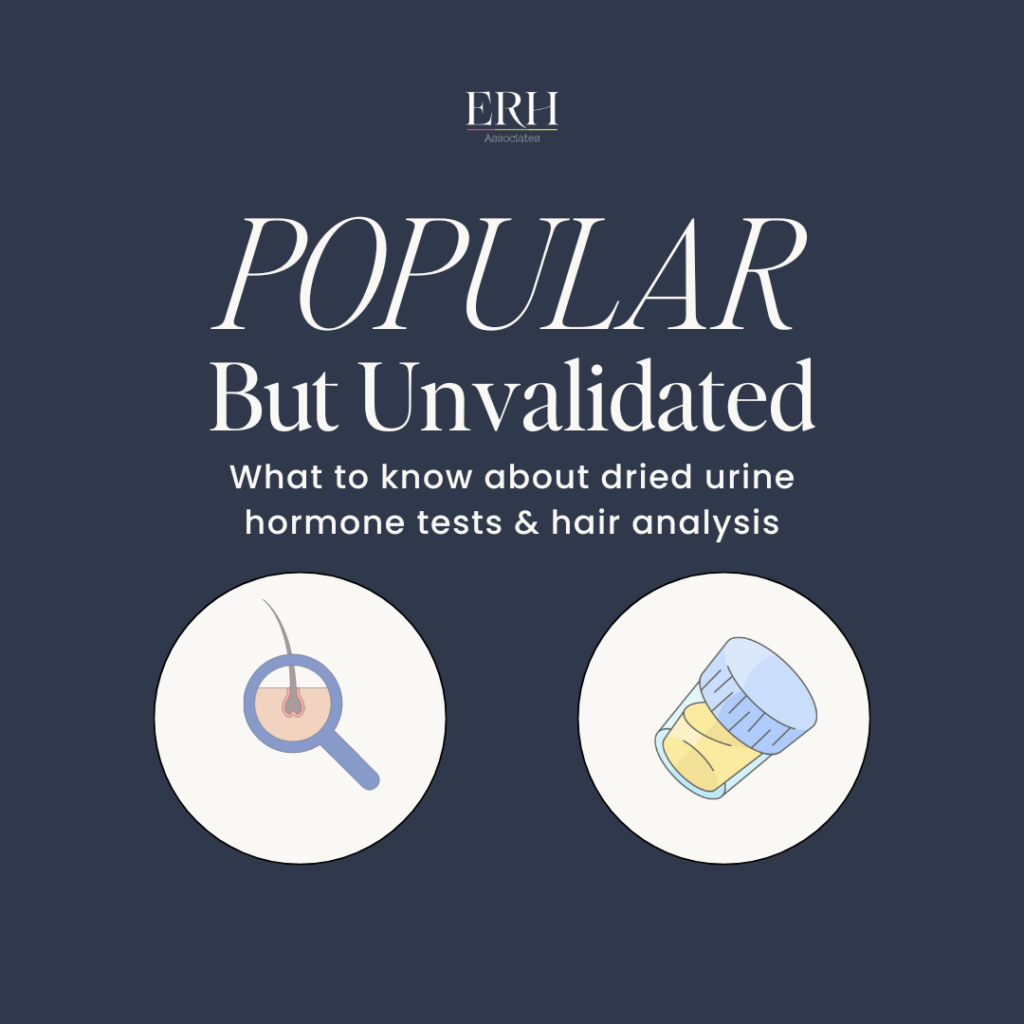If you’ve felt tired, foggy, out of balance or had other symptoms which have been difficult to explain —and traditional tests came back “normal”—you may have been offered alternative or “more comprehensive than conventional” testing. From dried urine hormone panels to hair analysis for allergies or nutrient status, these tests are increasingly popular in wellness circles and online health spaces.
At first glance, they may offer potential answers that conventional medicine hasn’t yet, and the tests are often promoted as being more personalised, more detailed, and more proactive. For people who feel unheard in traditional healthcare settings, these tests can feel like a step toward finally being taken seriously.
W understand this experience. Many of our patients come to us after investing significant time, energy, and money into tests that promised answers—but sometimes this has ultimately led to more confusion and expensive supplements without relief. In this article, we gently clarify the difference between validated medical testing and some commonly used wellness tests that aren’t yet supported by clinical guidelines. We want to reassure you that your symptoms are real—and that you deserve care based on the best available evidence.
What Makes a Test Evidence-Based?
A validated or evidence-based test is one that has been:
- Studied in peer-reviewed clinical research
- Proven to be accurate and reliable across large groups
- Endorsed by international medical and endocrine guideline bodies
- Interpreted in the context of your symptoms and risk profile
- Able to safely guide diagnosis and treatment
By contrast, unvalidated tests may be popular—but lack robust evidence, consistent standards, or guideline endorsement.
1. Dried Urine Hormone Testing
These tests involve collecting urine on filter paper several times a day to measure cortisol, sex hormones (like estrogen and progesterone), and their metabolites. They’re often marketed as a more in-depth way to assess hormone rhythms and metabolism.
⚠️ Why It’s Unvalidated:
- Not recommended by international endocrinology or gynecology societies
- Reference ranges vary by lab and are not internationally standardised
- Urine metabolites don’t reliably reflect active hormone levels in blood or tissue for some hormones
- Sometimes used to justify hormone treatments without robust clinical indication
The reports look impressive—but without validation, but sometimes lead to unnecessary treatments, including hormone supplementation, even when standard blood tests are normal.
2. Hair Analysis for Nutrients, Allergies, or Hormones
Hair testing is sometimes promoted as a way to assess hormone imbalances — often marketed as a convenient, non-invasive insight into the body’s long-term health.
⚠️ Why It’s Not Recommended in Clinical Practice:
- Hair is not a reliable indicator of hormone balance
- Results can be affected by shampoo, hair dye, external contaminants, and hair growth rates
- No consistent correlation has been demonstrated between hair levels and blood or tissue levels in peer-reviewed studies
- Not recommended by international endocrinology organisations for clinical use
While appealing in theory, hair analysis can lead to confusion, unnecessary treatment, or misplaced focus — especially when used in place of validated testing methods.
So Why Are These Tests So Popular?
Because they often:
- Feel more proactive, personalised and holistic
- Well packaged and marketed
- Speak to people who haven’t felt heard in the conventional system
We get it. Your symptoms are real. Your search for answers is valid. And we’ve seen firsthand the frustration that can come with being told everything is “normal” when you still don’t feel well.
But more data doesn’t always mean better answers if the data isn’t reliable or interpretable.
Our Approach at ERH
We aim for evidence-based and context-aware care.
We recommend:
- Validated tests processed by accredited labs
- Judicious and individualised selection of investigations, in alignment with your symptoms and health context
- Focus on clear, evidence-informed but individualised care
Final Thoughts
Dried urine hormone testing and hair analysis may sound advanced or holistic — but they are not recognised as validated diagnostic tools by international medical bodies. At worst, they can lead to unnecessary interventions. At best, they may be an expensive distraction from the real root causes of what you’re experiencing.
At ERH, we aim for an approach that that values your experience, uses evidence-based tools, and focuses on clear, personalised, and meaningful care.
Want more myth-busting insights and practical guidance?
Follow us on social media or subscribe to our newsletter for articles like this — plus upcoming features on:
- Adrenal fatigue: What’s real and what’s not
- When More Isn’t Better: What to Know About Broad Screening Panels and Out-of-Context Testing

Comments +